Places to visit if you are in Terai (state 2) :Nepal
Visit Nepal (State 2) If you are in state 2 of Nepal or if you want to visit Nepal then these are the best place to be o .A few days ago, the world famous magazine Forbes published a list of 10 countries to visit in 2020 in which Nepal is at number one. Nepal has declared 2020 as the Year of Tourism. The government aims to attract 2 million tourists a year.
The list made public by Forbes will definitely help in the promotion of Nepal at the international level.The federal government as well as the state governments are trying to attract tourists to their areas during the year. All seven provinces have their own characteristics. There is a lot of potential for religious tourism in the two states. There are religious sites of Hindu, Muslim, Buddhist and Jain religions. The state government has also taken a policy to develop religious tourism in the two states.We have tried to provide information about the 10 major religious and cultural sites to visit in the two states.
The list made public by Forbes will definitely help in the promotion of Nepal at the international level.The federal government as well as the state governments are trying to attract tourists to their areas during the year. All seven provinces have their own characteristics. There is a lot of potential for religious tourism in the two states. There are religious sites of Hindu, Muslim, Buddhist and Jain religions.
Janaki temple
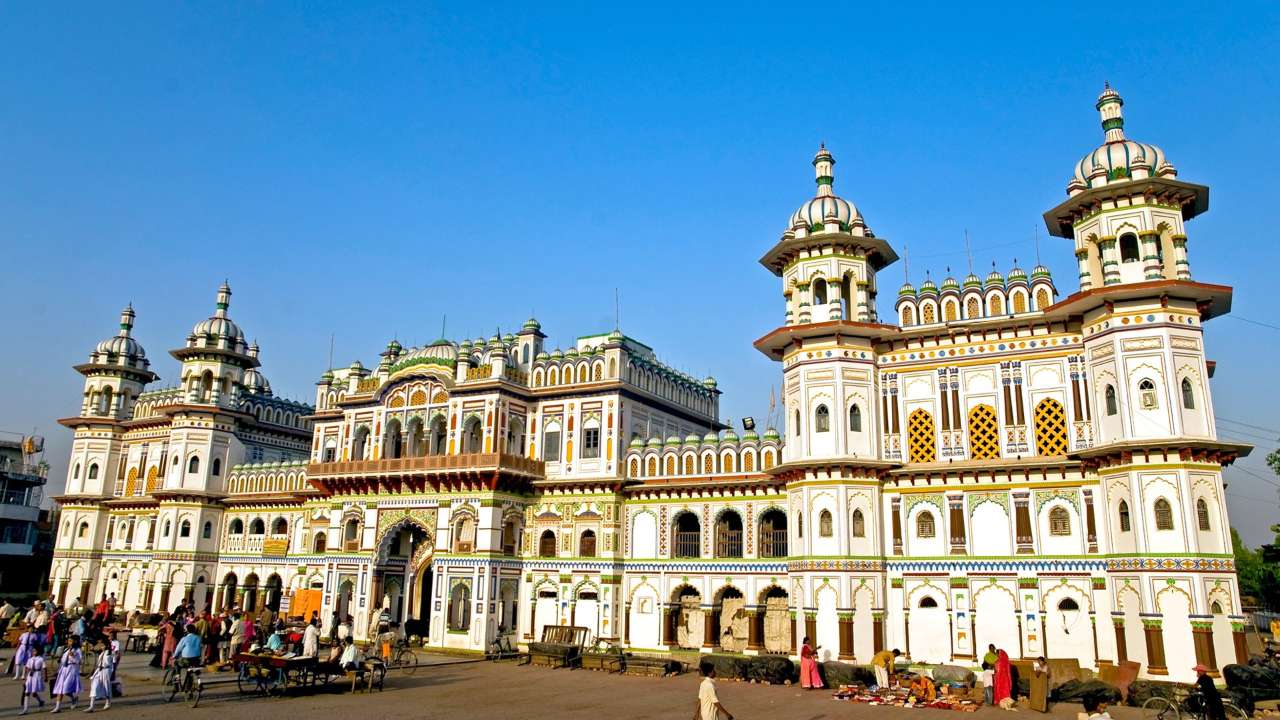
Janaki Temple
Janaki Temple is a major religious and tourist site of State-2. This huge temple is a center of faith not only for Nepalis but also for Hindus all over the world. From a tourist point of view, Janaki Mandir is the most visited place in State-2. Although the Janaki temple was built in 1911, Saint Shurkishore Das of Lohagarh, Central India, discovered Janakpurdham in the 15th century and laid the foundation of the temple.
Shurkishore Das was an exclusive devotee of Janaki. Once he wanted to visit Mithiladham. But he did not know where Mithiladham was. There is a legend that one day Janaki came to him in a dream and showed him the way to Janakpurdham.
It is said that Adi Mahanta Shurkishore Das Vaishnav, who came to Janakpur from Lohagarh in Rajasthan, India in 1417 BS, found a statue of Ram Janaki. In 1784, King Manik Sen of Makwanpur donated 1400 bighas in the name of Janaki temple.Later, the childless queen Vrishabhanu Kumari of Tikamgarh expressed her desire to have a son before Janaki visit here in Nepal
It is said that a huge temple was built after his wish was fulfilled.the temple was built at a cost of Rs 900,000 at that time, Janaki temple is also called Naulakha temple. The foundation stone for the temple was laid in 1894. The temple is believed to have been completed in 1911. The temple in the central part of Janakpurdham is considered to be an excellent example of human creation.
The architecture of the temple is attractive. The temple is spread over 49,555 square feet.The temple has 60 rooms. During the development of the Licchavi Republic in Vaishali, India, the Mithila civilization reached its height in Nepal. Apart from Janakpur and Sita, Janakpurdham is said to be the abode of scholars like Yajnavalkya, Gargi and Maitriya.Voices have been raised for the inclusion of the Janaki Temple in the World Heritage List with its turret, dome, sanctum sanctorum, golden gate, wide clean premises and artistic entrance.
Dhanush temple
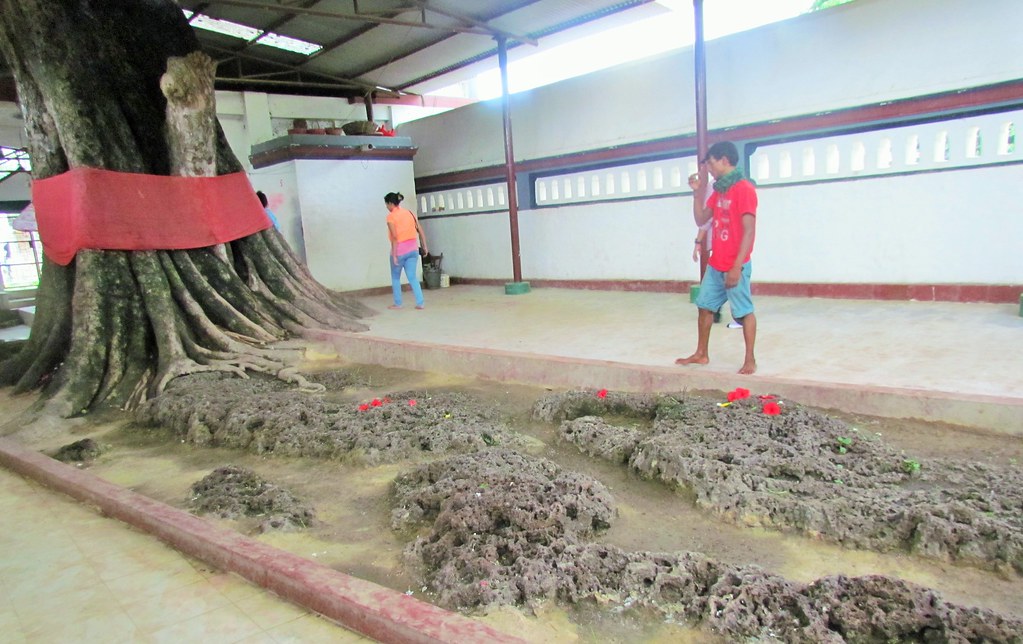
Dhanusha Temple
The Dhanush Temple in Dhanushadham Municipality of Dhanusha District is also one of the important tourist destinations for State-2. In the Treta era, Lord Rama had broken the bow of Lord Shiva in Sita Swayambhara.When Lord Rama tried to offer credentials to Lord Shiva’s pinak bow, it was cut into three pieces. A piece falls in the sky, a piece in the underworld and a piece falls on the earth is mentioned in the Valmiki Ramayana. It is believed that Dhanushadham is the place where a piece of Pinak bow fell on the earth.Dhanush Temple is located at a distance of 15 kilometers from Janakpurdham, the temporary capital of State-2. It is said that the area was named Dhanushadham and the district was named Dhanusha after the same place. Visitors from different parts of Nepal and India visit this place which carries the history of Treta era. Apart from Dhanush Temple, there are other tourist spots in Dhanushadham area such as Dhanushadham Forest and Van Ganga River within Dhanushadham Forest .
Jaleshwar Nath Temple

The Jaleshwar Nath Mahadev Temple in Jaleshwar to visit in Nepal ,the district headquarters of Mahottari, is also of special importance among the tourist destinations of State-2. The Jaleshwar Nath Temple in the Jaleshwar Municipality in the border region of India is one of the major tourist attractions.It is believed that the name of the Mahadev here is Jaleshwar Nath Mahadev as Shiva Ling is under water here.
At the bottom of the water-filled cave in the middle of the temple is a linga-shaped water tank with Shiva linga. The same Shijavi in the water tank is called Jaleshwar Nath.On the day of Shivaratri, a large number of devotees gather here to worship.In 1869 BS, during the reign of the then King Girwanyuddha Bikram Shah, 275 bighas of land belonging to Vaida Jawdi, Bajrahi, Kanchanpur, Jaleshwor, Damhi Maheshpur and Mahadevpatti were given to the then Mahantha with red seal for the systematic worship of ancient Jaleshwar Nath Mahadev.
Rauja Mazar

Rauza Mazar
Rauja Mazar in Balwa Municipality of Mahottari District is also an important tourist destination. The site is located at Dhamaura in Mahottari, 15 km west of Janakpurdham, the provisional capital of state-2. For Muslims, Rawza Mazar is a center of faith.According to the locals, the history of the tomb on the west bank of the river Vighi is three hundred years old.Although a major religious site for Muslims, Hinduism is also a popular destination. Devotees who take vows on a daily basis and offer chadors after the vows are fulfilled tend to have a significant number of followers of all religions, not just one.It is said that at the time when Nepal was divided into twenty-two and twenty-four states, three devotees of Allah, namely Baba Gada Ali Shah, Baba Raham Ali Shah and Baba Wahar Ali Shah came from Ajmer in Rajasthan, India.
It is believed that the followers of Islam may have been sent by Baba Khaja Ajmeri from Rajasthan, India for the purpose of imparting religious education and information to the Muslim community living in the Mithila region.Hundreds of devotees from different parts of Nepal and India come here daily. Especially on Mondays and Thursdays. Devout devotees sacrifice chickens and even goats. Every year in the month of Chait, Ursha Jalsa (religious discourse) is celebrated grandly at Baba’s tomb. According to the Mazar Committee, more than two lakh devotees are participating in it. On this occasion, about 10,000 goats and more than 15,000 chickens are sacrificed by the devotees.
Salahesh Phulbari

Salahesh Phulbari in Siraha district is an important place for tourists. This place is famous for its folk hero Salahesh and Haram flowers which bloom only one day of the year.Every year on the first day of the new year, a white garland-shaped flower blooms for one day on the Haram tree in the center of the Salahesh flower garden.Surprisingly.
the flower that blooms on the first day of the new year withers in the evening of the same day. There is a big fair on the 1st of Baisakh every year to see the same flower.The flower garden is spread over an area of nine bighas near Padaria Chowk, 4 km west of Lahan Bazaar in Siraha district.
The flower garden is famous as the flower garden of Dusadh and Sahalesh, the favorite deity of Danuwar caste.The Haram plant in the middle of the flower garden is believed to have been in bloom since the sixth to seventh centuries.Under the Haram tree is the cave of the folk deities Sahales and Malini. There is a magnificent statue of Sahales and Malini in the cave.
Behind the temple are the wells and the river Baliganga. According to the locals, the well behind the temple is rarely seen.There is a belief that the vow made there will be fulfilled. Young women have been taking the place as a symbol of love. Visit Nepal
It is believed that those who marry with the flower as a witness will have a happy married life.King Salhes was known as Lok Nayak. There are many historical sites associated with Salahesh, which is revered for its heroism and manliness, of which Salahesh Phulbari is one.
There is a legend that Salhes used to bathe in Manik Daha on the same day, pick flowers in the flower garden, play wrestling in Sylhet arena and listen to the sufferings of the people in Kanchangarh by worshiping Kuldevi.Salahesh was married to Sameer, daughter of Balatpur resident of Baruwar in Madhuvani district of bordering India.
It is believed that Chandravati, the daughter of the then King Kuleshwar of Pakdiyagarh, went to Pakdiyagarh after learning that Salhesh had been kept in jail after rejecting her love proposal. She is believed to have released Salahesh with the help of her classmate Dina Malini. There is a legend that Malina appears in the form of a garland on the first day of Baishakh every year waiting for Salahesh.
Parasnath temple
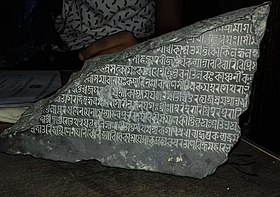
Parasnath temple in Parsa district’s Sakhuwaprasauni village municipality ward no. It is in 5. The temple, which has the potential to attract tourists, is now losing its identity.It is believed that Parsa district was named after this historical temple. This temple, which is considered to be about four hundred years old, is deteriorating due to lack of proper protection and maintenance.
Simrangarh

About 20 km east of Kalaiya, the district headquarters of Bara. The remote Simraungadh is one of the cultural heritage sites of Nepal with a rich historical background. This region was called Baragadhi as it was located between 12 forts from the rise to the end of Mithila.It is believed that Bara district was named after Baragadhi. Simraungadh is also one of the 12 forts of Bara.
Simraungadh became the capital of this region of the Republic of Mithila after the arrival of the Doi kings in the 11th century.Exiled Prince Nanyadev from Karnataka established his kingdom in 1097 by declaring Tirhut an independent state. Nanyadeva, who fled from a state called Nanyapuri out of fear of the Muslim rulers, made Simraungadh his capital.During the expansion of the kingdom by King Shiva Singh, one of the Doi kings, the entire territory ruled by the Republic of Mithila extended from Makwanpur, Palpa to Gorakhpur and became famous in folklore as the hero Sabai Singh. visit Nepal
At the end of the 13th century, Simraungadh was destroyed during the reign of the last Doi king, Harisingh Dev, by a general named Pari Samsuddin, who was in the grip of Lipsa, the kingdom of Balwan, the Muslim emperor of Delhi.King Nanyadeva laid the foundation stone for the capital at a place called Simravan in the region and built a huge fort called Simraungadh to establish an independent state.
Nanyadev and his descendants ruled the region for 230 years from 1097 onward. Haridev, one of Nanyadeva’s descendants, became the last king.Raja Haridev Singh E.S. In 1327, some civilians and armies fled from the north to the hills of Nepal.If the historical heritage of Simraingadh in State-2 can be protected and promoted, it is possible to benefit from the tourism point of view.
Gadhimai
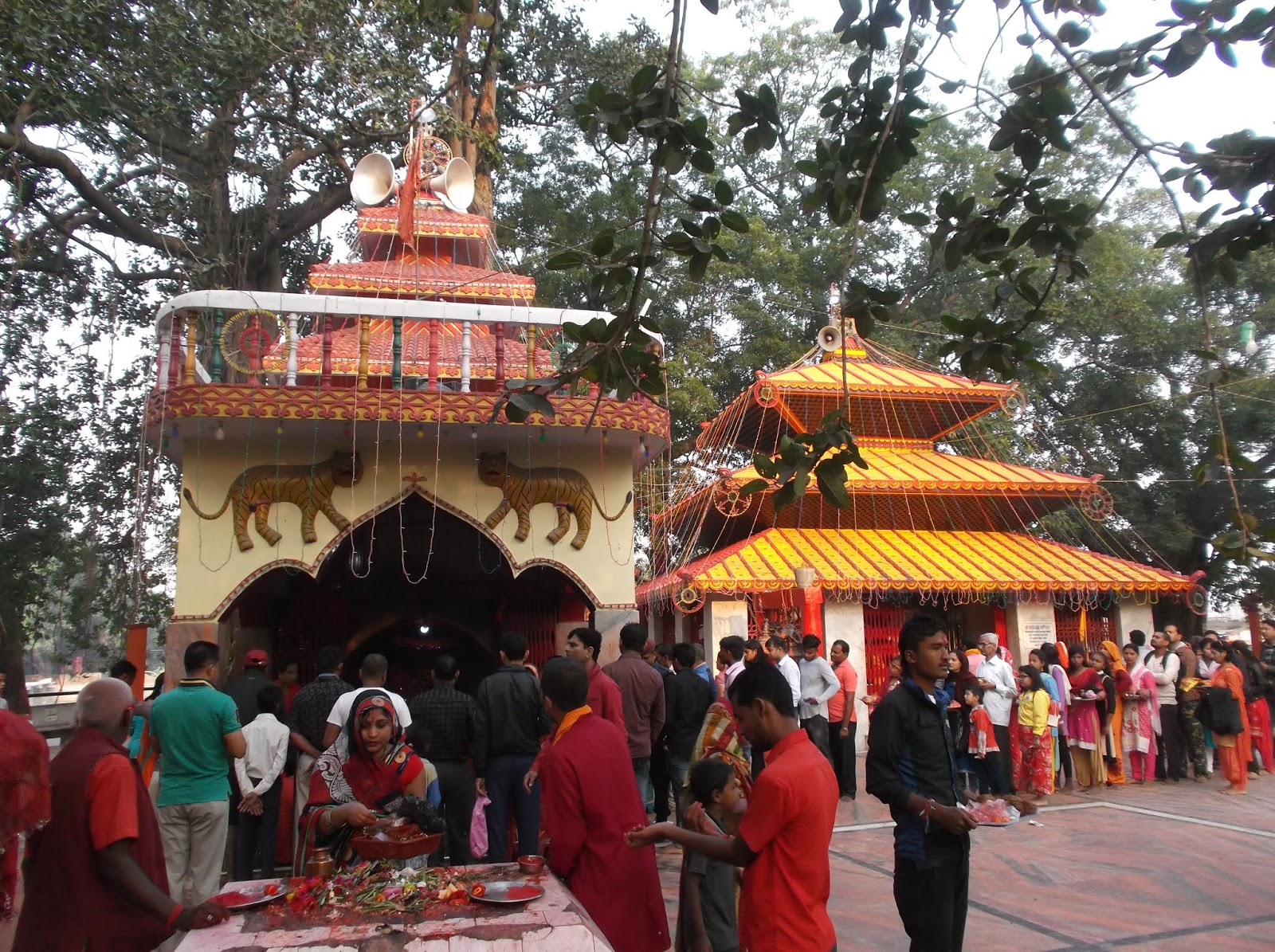
Gadimai
Gadhimai municipality ward no. Of Bara district. The Gadhimai temple at 1 is world famous. The Gadhimai temple in Bariyarpur, eight kilometers east of Kalaiya Municipality, the district headquarters of Bara, hosts a fair every five years from the seventh of Mansir Shukla.Since the fair is held here in five years, millions of devotees come here. Devout devotees from Nepal and India as well as other countries come here.There are various legends about the establishment of Gadhimai Bhagwati. According to a legend, the temple was established 800 years ago by Lord Chaudhary of Bariyarpur.A trident has been installed in the open field of Bariyarpur. visit Nepal.
To the south of the trident is a temple with a statue of the goddess.To the east-south of the temple, along with the peepal tree, Brahmasthan is also worth seeing. Gadhimai is welcomed on the seventh day of Mansir Shukla from the Brahmasthal on the east side.The temple is opened to the public only after worshiping the mother for five days. During the fair in this temple, sacrifices are offered only two days in a month. In which thousands of devotees sacrifice animals after fulfilling various vows.
Murtiya
The sculpture in Sarlahi district has historical significance. It is associated with Simraungadh, the capital of the Karnataka dynasty. Many statues were found at the site a few years ago during excavations by the Department of Archeology. Due to the discovery of historical statues, the place was named Murtiya. Ramdayal Rakesh explains.The idols found in this place are kept in a safe place.A special fair is held in the temple on January 1. Due to its proximity to Barhathwa, one of the largest markets in Sarlahi district, those who reach Barhathwa for business work also visit the idol once.
Chhinnamasta
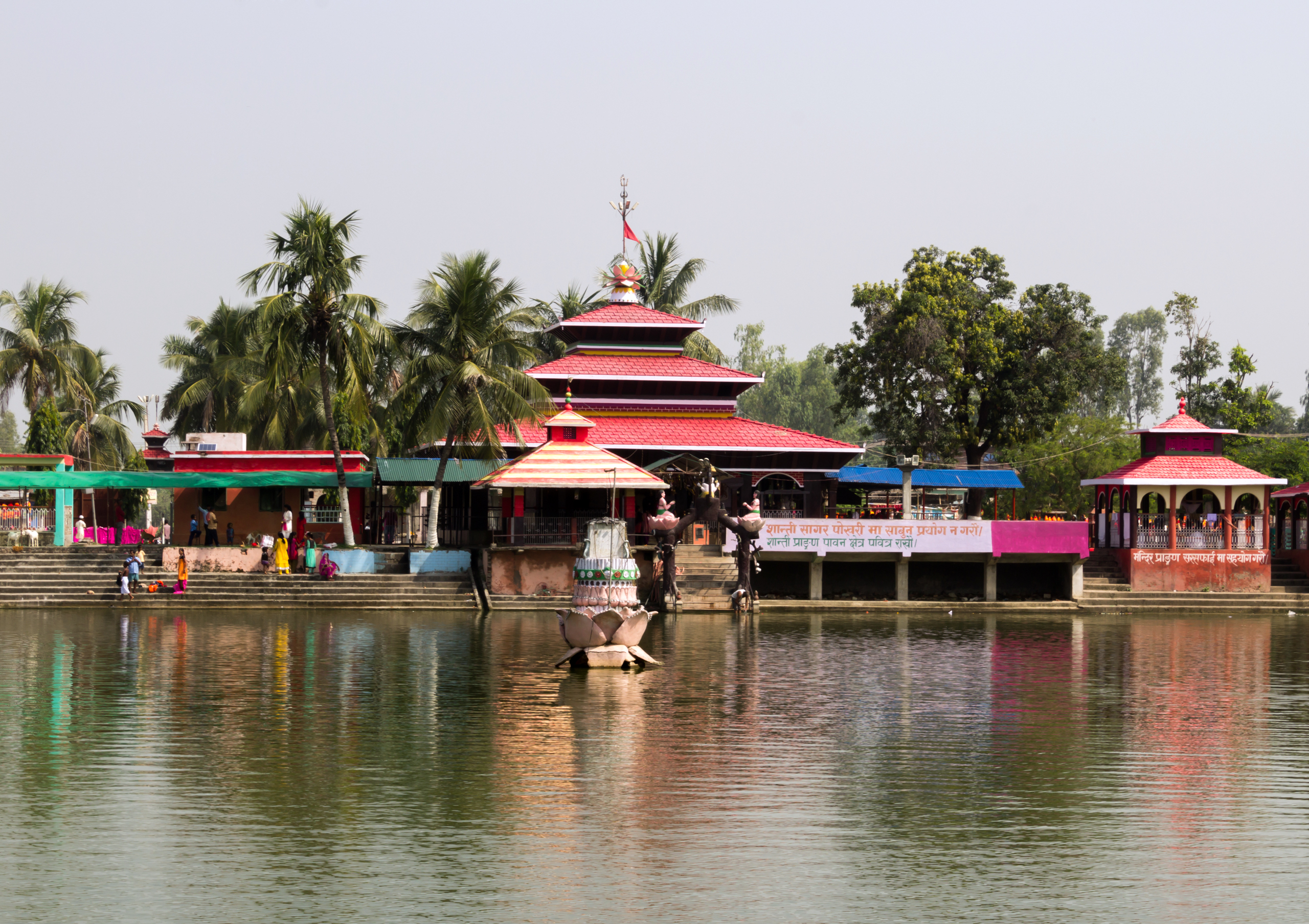
Chinnamasta Temple
There is a temple of Chhinnamasta Bhagwati in Sakhada village of Chhinnamasta municipality of Saptari. It is believed that the vows are fulfilled when one reaches Chhinnamasta Bhagwati with various vows, so a large number of devotees from Nepal and India come here.A large number of devotees come to Chhinnamasta during Dashain.The history of Chhinnamasta Bhagwati temple, which has a lot of potential for religious tourism, is linked to the history of Simraungadh. Visit Nepal.
According to legend, when the Muslim rulers invaded in 1097, the Karnataka king of Karnataka Nanyadev saved his life and reached Mithila via Pataliputra (Patna) and established his capital at Simraungadh (Bara).In the fifth generation of the Nanyadeva dynasty, Shakra Singh Dev became king. Shakra Singh left his minor son Harisingh Dev on the throne and went to Saptari to live in exile.
It is believed that the idol of Goddess Bhagwati, which was found while clearing the forest in this place covered with forest at that time, was established as its family deity and named after the goddess Shakreshwari.Later, the name of the place was changed to Sakhada.
Until a few years ago, the name of Sakhdeshwari Bhagwati was worshiped there. As there was no head in the idol of Bhagwati, it was later renamed as Chhinnamasta Bhagwati.A closer look at the idol of Sakhada Bhagwati reveals that it was set up in three pieces. In 1328, Gayasuddin Tughlaq attacked Tirhut. As a result, Simraungadh was destroyed .Even the idols of Simraugadh are still in a state of disrepair. Historians say that the idol of Sakhada Bhagwati may have been blown up in the same attack.Chhinnamasta Bhagwati’s temple is a center of faith for the Muslim community as well as the Hindus.What is the main objective of Visit Nepal 2020?
FAQ’S
Is it a good time to visit Nepal?
How much money should I bring to Nepal?
What do I need to know before going to Nepal?
Where to visit in State 2 of Nepal?
Comment Here!